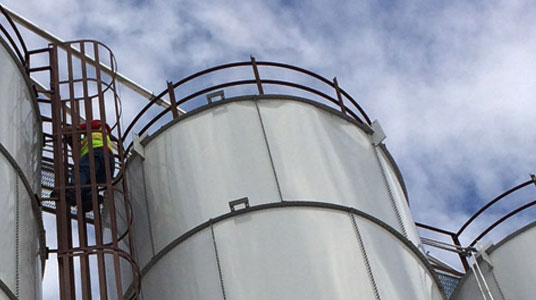Chiller System Basics
Are you looking for “Chiller System Basics” while trying to understand how chiller systems work? If so, this post should help!
How Do Chiller Systems Work
Overview of a Chiller System
Typically, Chillers use either an absorption refrigerant, or vapor-compression cycle to cool a fluid for the transferring of heat. Both chiller types rely on three basic principles.
- 1st – When a liquid is heated to a certain degree, the liquid vaporizes into a gas, and when that gas is gets cooled, it condenses into a liquid
- 2nd – By lowering the pressure above a liquid, the lowered pressure reduces its boiling point and increasing the pressure raises it
- 3rd – Heat consistently flows from hot to cold
Cooling Cycle Basics
The basic cooling cycle is the same for both absorption chillers, and vapor-compression. Both of these systems utilize a liquid refrigerant that changes phase to a gas within an evaporator which absorbs the heat from the water to be cooled.
The refrigerant gas is then compressed into a higher pressure by a generator or compressor, converted back into a liquid by rejecting heat through a condenser and then expanded to a low- pressure mixture of vapor and liquid and that then goes back into the evaporator section. The cycle then starts the process all over.
Vapor Compressor Chiller
A vapor-compression chiller is made up of four primary components of the vapor-compression refrigeration cycle. These include a metering device, a condenser, a compressor, and an evaporator.
Vapor-compression chillers commonly utilize CFC or HCFC refrigerants to achieve a refrigeration effect. Compressors are the driving force behind a vapor-compression chiller, and acts as a sort of pump for the refrigerant.
Compressed refrigerant gas is sent from the compressor into a condenser unit that renounces the heat energy from the refrigerant to cooling air or water outside of the system.
The transfer of heat allows the refrigerant gas to condense into a liquid which is then sent to a metering device.
The metering device hinders the flow of liquid refrigerant which causes it to drop in pressure. Due to adiabatic flash evaporation, the drop in pressure causes the heated refrigerant liquid to change phase from liquid to gas and in doing so absorbs heat from the water to be.
The metering device is in a position so that the expanding refrigerant gas is contained within the evaporator, transmitting the heat energy from the water to be cooled into the refrigerant gas. The warm refrigerant gas is then sent back to the compressor to restart the cycle, and the newly chilled water in the separate loop can now be used for cooling.
Absorption Chiller
An absorption chiller or absorption refrigerator uses a heat source to drive the refrigeration cycle in place of a mechanical compressor. Absorption chillers use two fluids which include a refrigerant, usually water and an absorbent; commonly a lithium bromide solution or ammonia.
These liquids are then separated and recombined in the absorption cycle where, due to the low pressure conditions, the water can more easily change phase than it normally would. The high affinity of the two liquids encourages easy absorption.
The cycle starts with a mixture of liquid refrigerant water and absorbent, that is heated at a greater pressure to boil the water out of solution. After that, the refrigerant water vapor is sent past a condenser coil where heat is lowered and is condensed into a high pressure liquid. The liquid refrigerant water is then sent to the lower pressure evaporator where through adiabatic flash evaporation returns into a gas, absorbing the heat from the water to be chilled. The condensed liquid absorbent from the generator is sent back to be recombined with the low-pressure refrigerant vapors returning from the evaporator restarting the cycle over again.
Cooling Towers
The heat energy absorbed by the chiller is required to be rejected out of the system and into the atmosphere. Evaporative heat rejection devices called cooling towers are commonly used to lower the water temperature in larger chiller installations.
Phoenix Chiller Maintenance & Repair
If you have a industrial or commercial building that uses chillers All Kote Lining, Inc. can help maintain and repair your chiller. Regular chiller maintenance, chiller tube coating, and other quality services help chillers be more efficient, use less energy, and ultimately last longer. Give us a call to find out what we can do for you and your chillers in the Phoenix Valley.
Call Today – 480-966-4446

